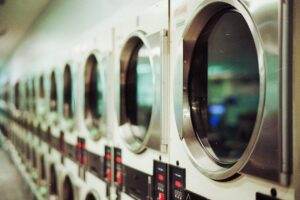Key Takeaways
- Water dispenser issues can be identified and fixed with troubleshooting techniques.
- Common issues include lack of water flow, temperature control problems, and compressor issues.
- Checking power supply and electrical connections is a crucial step in troubleshooting.
- Inspecting the water supply line and examining the water filter can also help identify issues.
- Regular cleaning and maintenance can prevent future water dispenser problems.
Identifying Common Water Dispenser Issues
There are several common problems that users may encounter with their water dispensers. One of the most common issues is a dispenser that does not dispense water or dispenses water slowly. This can be caused by a variety of factors, such as a clogged water filter, a faulty dispenser valve, or a problem with the compressor. Another common issue is a dispenser that dispenses water that is not cold or hot enough. This can be due to a malfunctioning temperature control or a problem with the compressor.Checking Power Supply and Electrical Connections
Before diving into more complex troubleshooting steps, it is important to check the power supply and electrical connections of the water dispenser. Start by ensuring that the dispenser is properly plugged into a functioning power outlet. If it is plugged in but still not receiving power, check the circuit breaker or fuse box to see if there is a tripped breaker or blown fuse. If everything appears to be in order, use a multimeter to test the power cord and electrical connections for continuity.Inspecting the Water Supply Line
The water supply line plays a crucial role in the performance of a water dispenser. If there are leaks or blockages in the supply line, it can affect the flow of water and cause issues with the dispenser. To inspect the water supply line, start by turning off the water supply and disconnecting the line from the dispenser. Check for any visible leaks or damage to the line. If there are no visible issues, flush the line with clean water to remove any blockages or debris.Examining the Water Filter
The water filter is an important component of a water dispenser as it helps to ensure that the water being dispensed is clean and safe to drink. Over time, the filter can become clogged with impurities and debris, which can affect the flow of water and the quality of the water being dispensed. To examine the water filter, locate it within the dispenser and remove it according to the manufacturer’s instructions. Inspect the filter for any signs of clogs or damage. If necessary, clean or replace the filter.Assessing the Water Dispenser’s Temperature Control
The temperature control of a water dispenser is responsible for regulating the temperature of the water being dispensed. If the water is not cold or hot enough, it may be due to a malfunctioning temperature control. To assess the temperature control, start by unplugging the dispenser and removing any panels or covers that may be blocking access to the control. Use a multimeter to test the control for continuity and adjust it if necessary.Troubleshooting the Dispenser’s Compressor
The compressor is a vital component of a water dispenser as it is responsible for cooling or heating the water. If there are issues with the compressor, it can affect the temperature of the water being dispensed. To troubleshoot the compressor, start by unplugging the dispenser and removing any panels or covers that may be blocking access to the compressor. Check for any visible signs of damage or leaks. If there are no visible issues, use a multimeter to test the compressor for continuity.Cleaning the Dispenser’s Condenser Coils
The condenser coils of a water dispenser play a crucial role in cooling or heating the water. Over time, these coils can become dirty or clogged with dust and debris, which can affect the performance of the dispenser. To clean the condenser coils, start by unplugging the dispenser and removing any panels or covers that may be blocking access to the coils. Use a soft brush or vacuum cleaner to gently remove any dust or debris from the coils.Replacing Faulty Dispenser Parts
If all else fails and the water dispenser is still not functioning properly, it may be necessary to replace faulty parts. Common parts that may need to be replaced include the water filter, dispenser valve, temperature control, and compressor. To identify and replace faulty parts, refer to the manufacturer’s instructions or consult a professional technician.Preventing Future Water Dispenser Issues
To prevent future issues with a water dispenser, it is important to practice regular maintenance and cleaning. This includes regularly cleaning the dispenser’s components, such as the water filter and condenser coils, as well as checking for any leaks or blockages in the water supply line. It is also important to follow the manufacturer’s instructions for proper use and care of the dispenser. In conclusion, troubleshooting is an essential process when it comes to maintaining the proper functioning of a water dispenser. By following the steps outlined in this article, users can identify and resolve common issues with their dispensers, ensuring that they continue to provide clean and safe drinking water. Regular maintenance and cleaning are also important in preventing future issues and prolonging the lifespan of the dispenser.How Can I Prevent Common Issues with My Water Dispenser?
Regular water dispenser maintenance tips can help prevent common issues like mold growth, funky tastes, and leaks. Clean the reservoir and replace filters as recommended. Keep the area around the dispenser dry and sanitized. Follow these simple maintenance tips to keep your water dispenser in top shape.
What Could Cause a Water Dispenser to Leak Inside and How Can I Troubleshoot It?
If your water dispenser is leaking inside, it could be due to a faulty water line, cracked reservoir, or damaged dispenser valve. To troubleshoot the issue, check for loose connections, inspect for cracks, and ensure proper alignment of the dispenser. Explore troubleshooting water leakage solutions to address the problem effectively.



